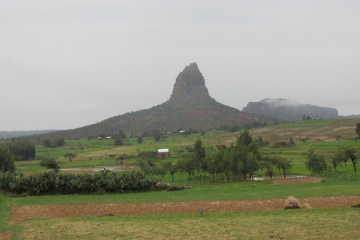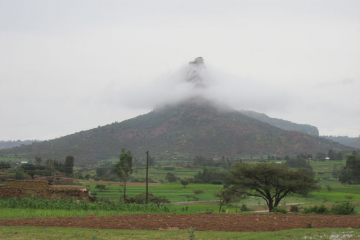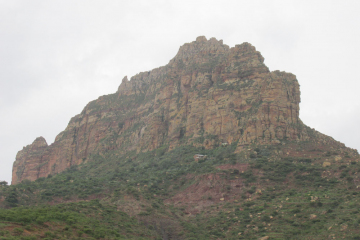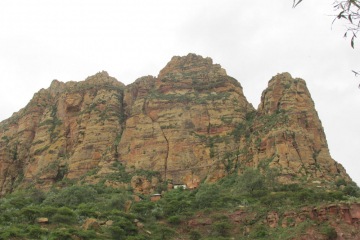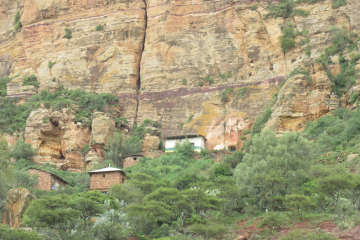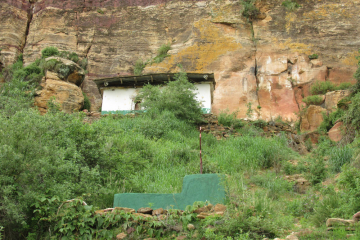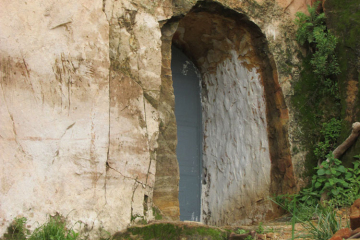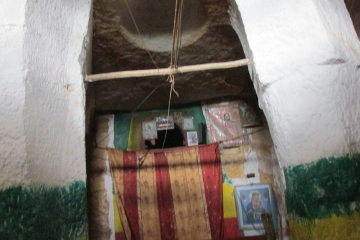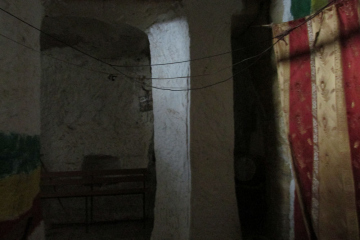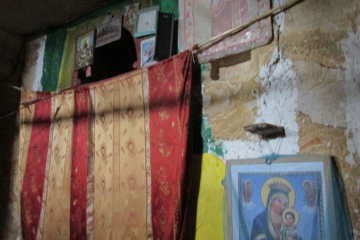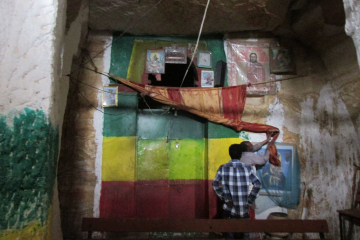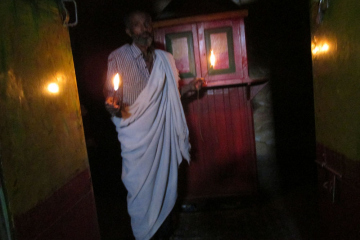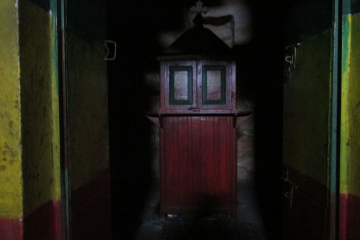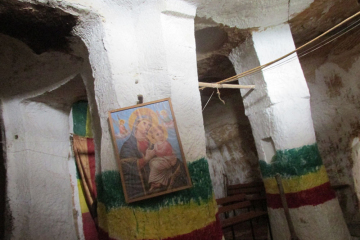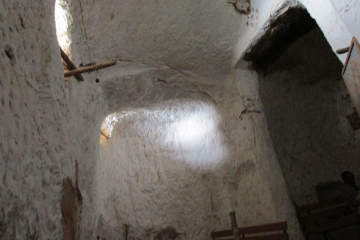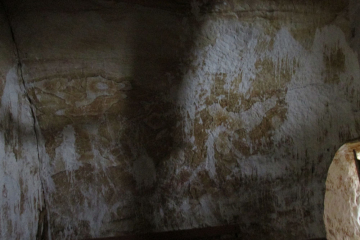Location
The built frontage of the church, which protrudes from the red cliff and is painted white to contrast with the backdrop, is clearly visible from the road between Degum and Megab and the roadside town of Degum.
Maryam Gulsha is almost an hour’s walk from Degum and above the village and area referred to as Gulsha or Gulitsha. The first thirty to forty minutes is easy going, crossing several fields to reach the foot of the mountain from where it is a twenty-minute ascent to the church. Maryam Gulsha is relatively accessible in comparison to the churches of the Gheralta range.
Site Description
(by Tarn Philipp)
The church of Maryam Gulsha lies east of Degum (town) and is located on the unmissable conical mountain that rises like a volcano from the Hawzien plain. The church is carved into the foot of the west facing cliff that forms the upper part of the mountain. The site offers a spectacular view over the Hawzien plain, Debre Tsion (Abuna Abraham) and the Gheralta Range, stretching from Wukro (left) to Megab (right). My visit coincided with the day of Maryam (Mary) and the priest had spent the night before in fast, at the church.
The church of Maryam Gulsha is a small and relatively simple rock-hewn church which was recorded by Ruth Plant (1967-1972). Like others in Tigray, this old rock-hewn church has since undergone expansion. The reason for this, given by the Abba (priest) responsible, was simply to increase its capacity. Having been the priest for 8 years, the Abba initiated the project. He was largely responsible for the work but was helped by two contracted workmen (both interviewed in Hawzien). Work began in September 2015 and lasted three months.
The recent excavation has exposed two free standing columns from the solid rock and extended the church southward to include a third entrance. This additional entrance is visible from the exterior, to the right of the built narthex. Both the old and new rock-hewn church lack the sophistication and craftsmanship found in most churches. The Abba hopes to further expand the church when funding allows.
The church is largely irregular in form and the arches and flat beams are poorly defined. There are two cupolas and a soft dome in the south aisle, which includes a large crack overhead. The ceiling is otherwise flat throughout. A noteworthy feature is the southwest column which is square at the lower and upper cross-section and circular in the middle cross-section and may indicate a poor attempt at a base and capital. The only other church where such a column has been identified is that of Giyorgis Mai’kudi in the valley near Hawzien.
The Maqdas is raised by two steps from the aisle and includes a wooden manbara tabot which is painted red and houses a tabot consecrated to Maryam. There are several carved niches present within the church. These are found on the east wall of the maqdas, the north face of the southern columns, the north wall of the second bay, the east wall of the north-west chamber. The chamber to the north of the built narthex also includes a deep niche in the east wall. The church includes three circular upper windows, all of which are roughly formed and found in the west wall. A circular built structure to the north of the church forms the Bethlehem.
Images
(Please click to enlarge)
